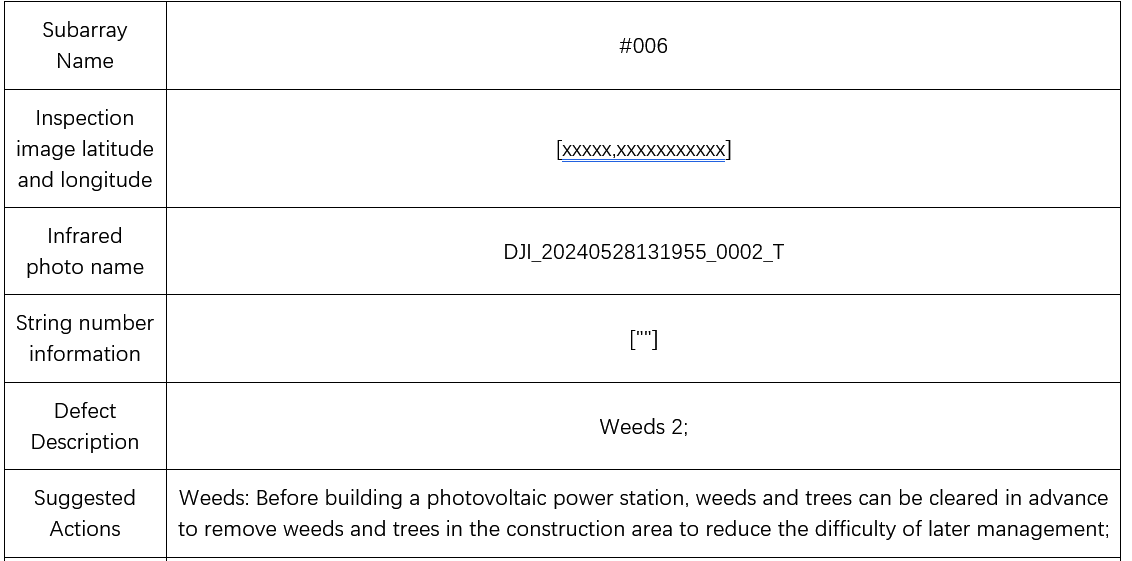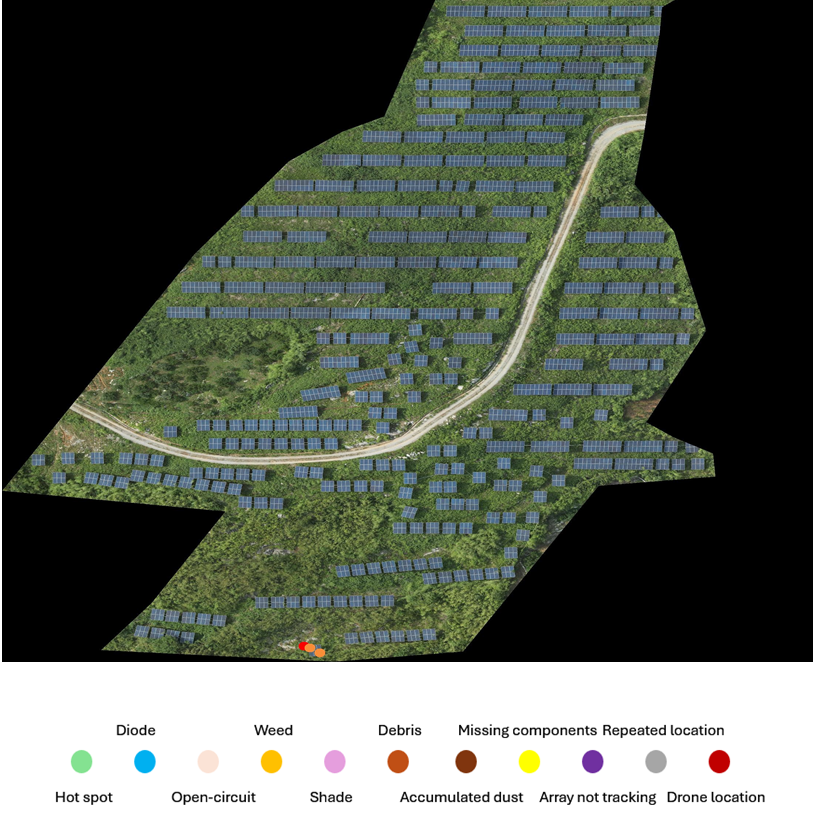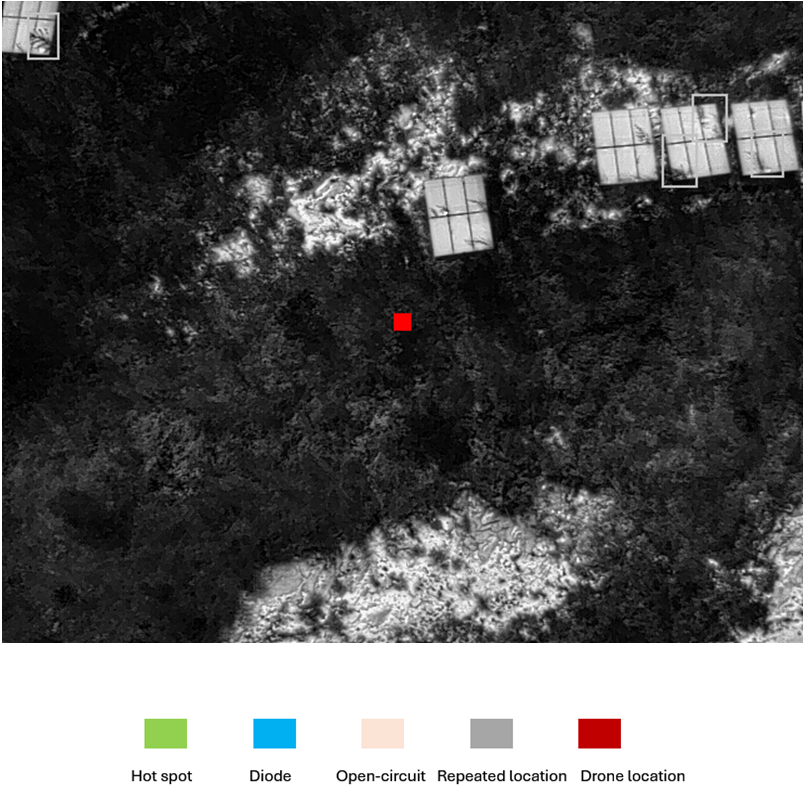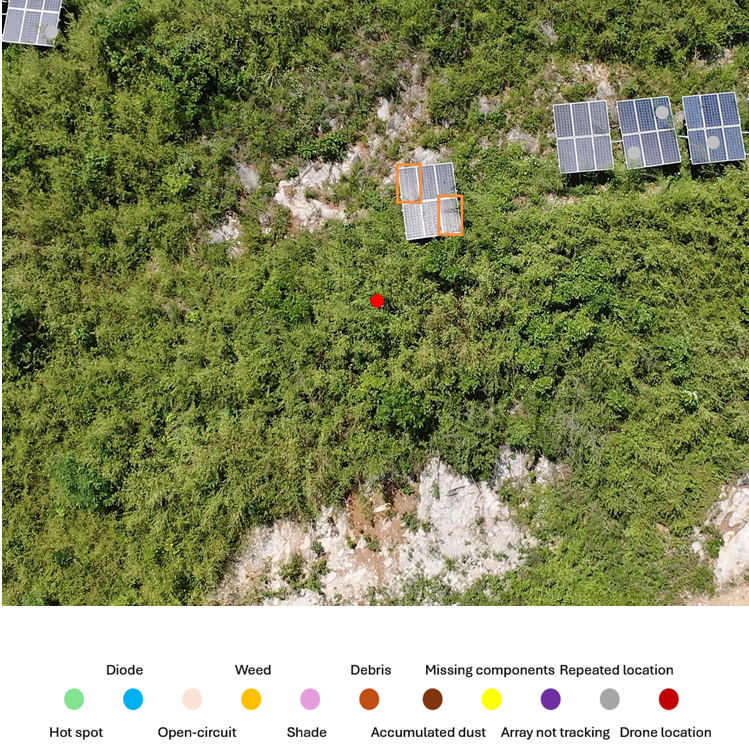Solar Farm Inspection with Drone
Benefits of using drones for solar farm inspections
Inspecting solar farms using drones has numerous major benefits:
- Drones can rapidly traverse vast distances, therefore drastically cutting the time required for inspections when compared to conventional approaches. This lets more thorough and frequent monitoring possible.
- Drones can readily check places like high-mounted panels, large arrays, or installations on uneven ground that are difficult or unsafe for human inspectors to access.
- Equipped with high-resolution cameras, drones may record thorough photos and movies, thereby allowing exact detection of flaws, damage, or other problems.
- Drones equipped with thermal cameras can find heat anomalies, hotspots, damaged cells, or broken wiring invisible through standard eye inspection.
- Reducing the demand for scaffolding, cherry pickers, or physical labor helps drones to cut the general cost of inspections and maintenance.
- Drones lessen the need for inspectors to operate at heights or in dangerous environments, therefore lowering the chance of mishaps and injuries.
- Drones can rapidly gather a lot of data in general. Analyzing this information helps one to track performance, spot trends, and more wisely schedule maintenance operations.
- Drones can offer real-time data and images, therefore facilitating instantaneous analysis and faster decision-making for repairs and maintenance.
- Drones can check solar farms with minimum disturbance to their operation, therefore guaranteeing that the energy output keeps on without notable interruption.
- Regular drone inspections assist to continuously check the state of the solar farm, so enabling early detection of problems and prevention of significant ones.
All things considered, drones offer a safer, more affordable, and more effective way to check and maintain solar farms, therefore guaranteeing best performance and lifetime of the installations.
when can we use drone for solar farm inspection
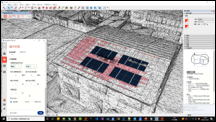
Solar projects pro-construction survey
Reality modeling. Utilize the flexible and maneuverable characteristics of drones to reconstruct the real-life model of the target area, collect survey data, and extract key data information Auxiliary power station design. Utilize 3D real-life models and combine with BIM design software to conduct photovoltaic power station performance evaluation, component arrangement design and economic analysis
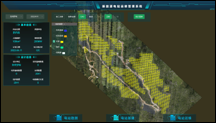
Solar projects construction audit
Regular flight collection of image data lines, combined with CAD drawing analysis and image recognition technology, to achieve power station construction progress and quality tracking Progress tracking. Intelligent identification of photovoltaic brackets and component panels, matching with CAD drawings, and regular access to power station construction progress Quality tracking. Perform semantic analysis on 3D point cloud data, extract bracket and component structures, calculate component installation positions and angles, and evaluate construction quality.

Operation and Maintenance
Infrared inspection. The drone is equipped with a dual-light gimbal to quickly identify hot spots, diode failures, and open circuit defects and form an inspection report. Assessment of equipment operating status. Use IoT sensors and big data analysis to monitor the operating status of equipment. Robot components are cleaned. Based on the cleaning evaluation, trigger the robot to clean the components to maximize the economic benefits of cleaning.
Solar projects construction audit & tracking
Based on drone platforms, data analysis and artificial intelligence technology, it provides real and reliable infrastructure monitoring data for power generation companies. UAVs are used to collect image data, and through image recognition and data analysis technologies, the infrastructure construction process is monitored, compared and matched with CAD drawings, and reports on infrastructure construction progress, construction quality, etc. are output to help staff effectively carry out infrastructure supervision work. Thereby ensuring the construction quality of photovoltaic power stations and improving power generation efficiency.
progress tracking
AI powered CAD analysis matching
Develop CAD drawing standards, automate the CAD parsing process, extract structured data, and match it with image recognition data
Power station image recognition
Identify brackets and components in orthophotos and extract the geographical location of relevant components
Tracking report generation
Real scene data recognition and CAD drawing analysis are combined to track the construction progress of photovoltaic brackets and components.
Quality tracking
Components installation position tracking
Identify the brackets and components in the orthophoto, extract the geographical location of the relevant components, and match the positions with the CAD drawings to ensure that the bracket components are installed in the correct position.
Solar component tilt angle recognition
Extract brackets and photovoltaic modules from the three-dimensional point cloud data, identify the orientation of the photovoltaic modules based on their structural characteristics, and compare them with the drawings to ensure that the installation angle of the photovoltaic modules meets the design specifications.
drone inspection for solar farm operation & maintenance
Photovoltaic intelligent inspection can help identify and solve various problems in photovoltaic power generation systems, including circuit faults, component aging, improper cleaning, etc. Through regular smart drone inspections, faults and potential problems can be discovered in time, and corresponding measures can be taken to repair them, thereby ensuring the normal operation of the photovoltaic power generation system. Drone inspection for solar farms can also monitor the performance indicators of photovoltaic modules, such as voltage, current, power, etc., to evaluate the power generation efficiency and performance health of the system.
Why our customers chose us
Highe precision
Intelligent identification of visible light and infrared thermal imaging images, defect identification accuracy reaches more than 90%, and positioning accuracy is within 2 meters
High efficiency
Utilizing unmanned equipment and processing platforms to conduct efficient inspections is dozens of times more efficient than traditional manual inspections
Intelligent
Together with our cloud-based solar farm inspection management system, we are able to generate inspection report, navigate our technician for trouble-shooting and record the trouble-shooting acitivities etc.
Our Workflow
Solar farm modeling creation
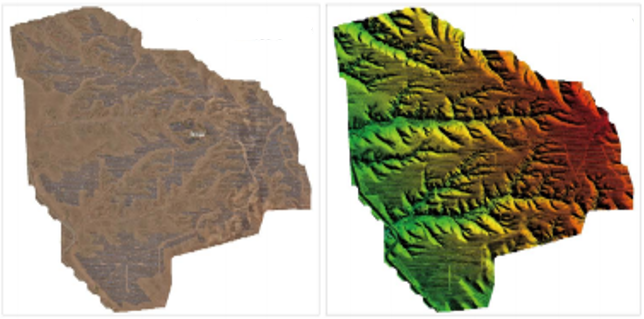
High -precision aerial photography is performed on the coverage area of the station, and the digital results of the station are produced through aerial triangulation, extraction of feature points with the same name, reconstruction of point cloud encryption, generation of dense triangulation grids and texture mapping. It only needs to be performed once for the same station
Drone inspection path planning
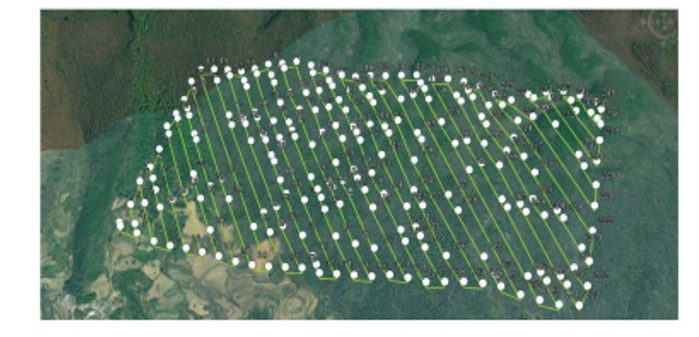
Based on the digital power plant model, all components are identified and segmented through image recognition algorithms , and each component is assigned its corresponding real geographical location. The optimal inspection route is generated autonomously based on the technical requirements of the inspection and the characteristics of the load, ensuring that the relative distance between each collection waypoint and the component is constant, and achieving maximum operating efficiency while maintaining the inspection results.
Data collection with drone
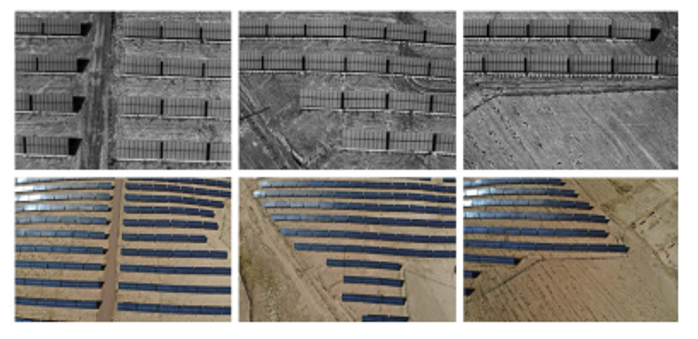
The drone flies autonomously in the photovoltaic power station according to the optimal route , and uses multi-sensor fusion payload to simultaneously collect original visible light and thermal infrared images. It has a “breakpoint resumption ” function. When the battery power is insufficient, it automatically returns to the take -off point, and automatically returns to the breakpoint after replacing the battery or charging to continue cruising. In the event of an emergency such as sudden rainfall , the drone can be controlled to return to the set location with one button .
Create defects identification missions
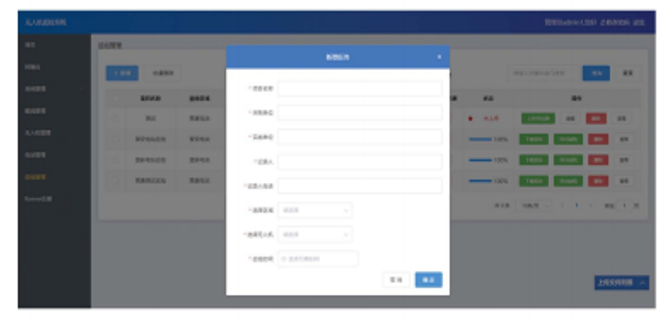
upload the data collected by the drone to the platform, create inspection tasks for autonomous defect analysis and defect location, and generate defect structured data.
Report generation
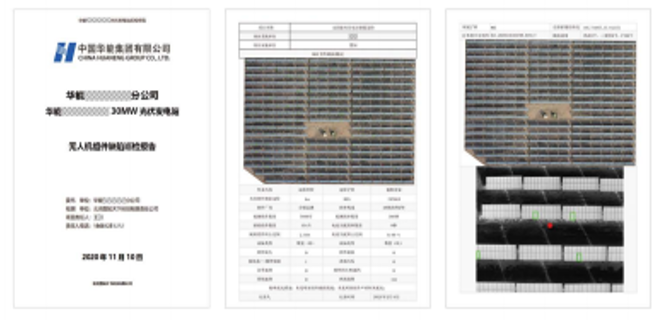
Based on the results of defect identification and location, defect reports are automatically generated . The defect report includes defect overview statistics, defect categories, and defect location for each array , providing a basis for operation and maintenance personnel to eliminate defects.s
defects site location
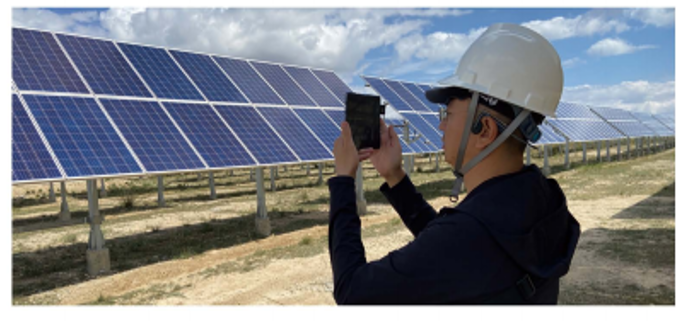
The location of all defects can be viewed through a handheld PDA. You can navigate to the fault location with one click, conduct temperature measurement and review of the faulty component, and automatically take photos or videos for storage. You can also view the processing status of the defects and eliminate unprocessed defects.
What Report can we deliver after inspection
Frame defects overview
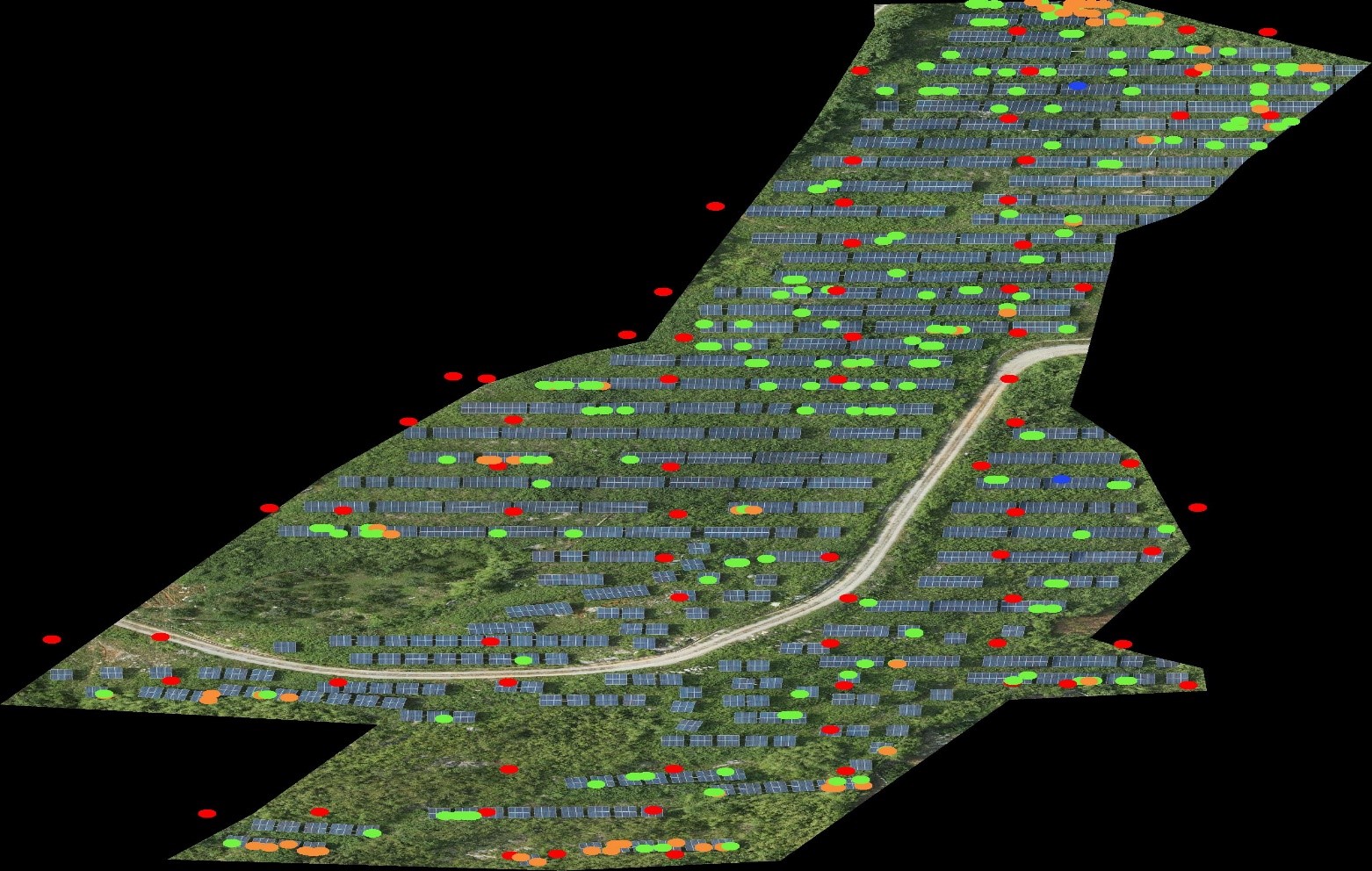
All defects will be color-coded and displayed on the sloar farm map.
Defect Statistics
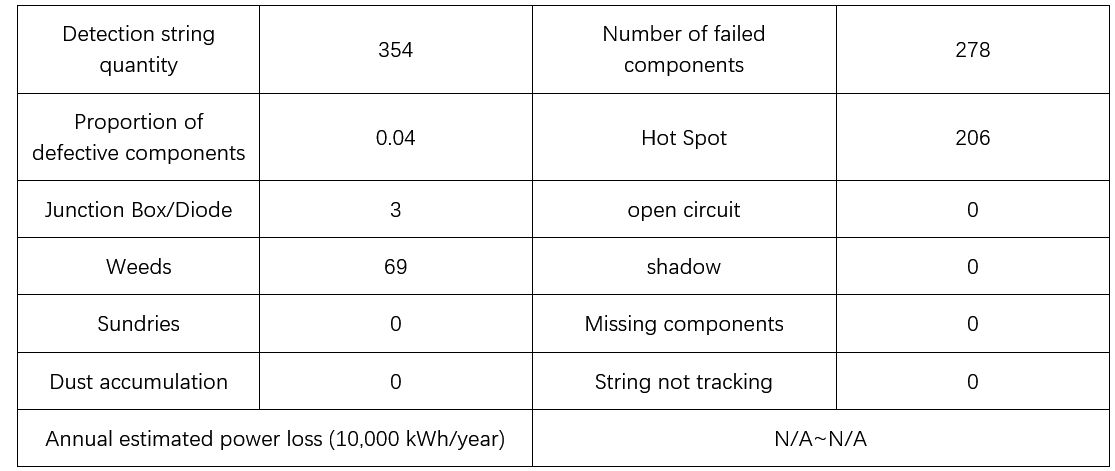
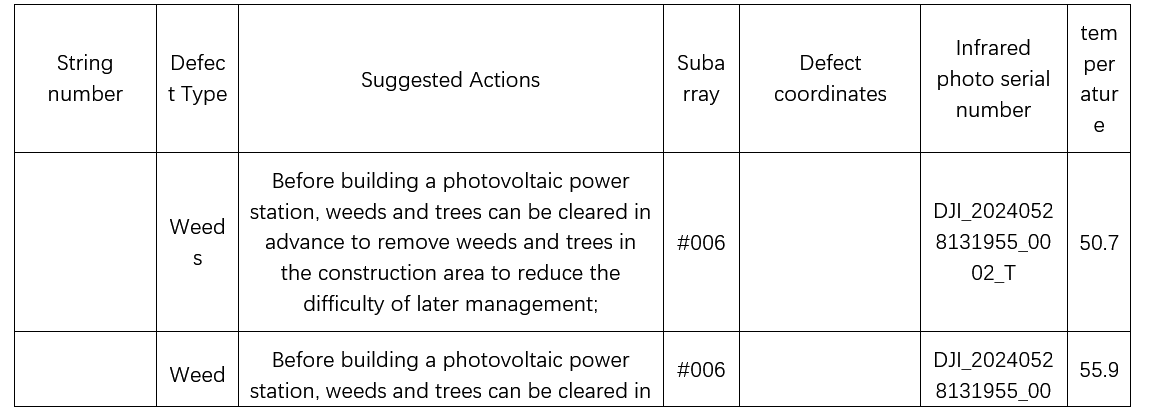
The defect statistics table will be delivered to allow our client understand overall picture of the overall solar farm defects.
Detailed Fault information
